Saturated Medium-Chain Fatty Acids: How To Use Them For Your Benefit
Medium-chain saturated fatty acids (MCFAs) are monocarboxylic acids with a hydrocarbon chain length of 13 to 16 total carbon atoms. They belong to the saturated fatty acids family.
They are abundant in nature ◳. But still present in plant and animal material at much smaller quantities than long-chain saturated fatty acids.
If you are looking for a specific medium-chain saturated fatty acid, I recommend you use the expanded toc to find it.
Table of Contents
Where To Find Medium-Chain Fatty Acids?
Medium-chain fatty acids can be formed in human tissues, mainly the liver.
They are naturally found in milk fat and coconut oil ◳. Coconut oil contains mostly lauric acid, 12:0, it’s about 50% of the fat content.
Breast milk is an essential source ◳ of medium-chain fatty acids for newborn babies.
Medium-Chain Fatty Acids Role
Medium-chain fatty acids play a vital role in intracellular signaling and contribute to the regulation of cell metabolism. It can thereby control cell death and survival.
Our Articles On Medium-Chain Fatty Acids
Below you will find medium-chain saturated fatty acids, and you can find out what they are and what they might be able to do for you.
Capric acid (10:0) are toxic and beneficial at the same time
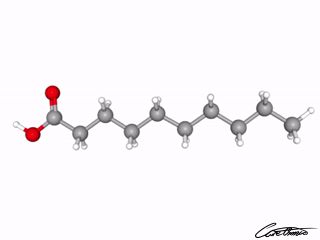
Capric acid is used for making artificial fruit flavors. You can find more information in What Is Capric Acid (10:0) & What Foods Can I Find It In?
The crude capric acid is toxic and harmful but still has potential benefits in different areas. Find out what they are in Capric Acid (10:0): 3 Research-Backed Benefits & 2 Side-Effects
Undecanoic acid (11:0) is antifungal
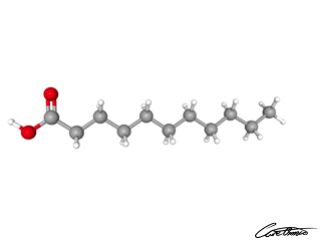
Undecanoic acid is found in fats and oils, but also in some fruits. Read more in What Is Undecanoic Acid (11:0) & What Foods Can I Find It In?
Undecanoic acid is very toxic to fungi. Therefore works as an antifungal agent. See what other benefits undecanoic acid has in Undecanoic Acid (11:0): 3 Research-Backed Benefits
Lauric acid (12:0) can raise cholesterol
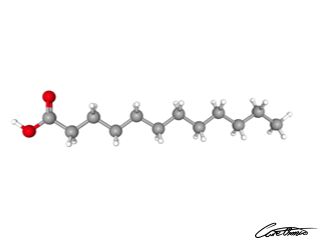
Lauric acid is relatively uncommon but still inexpensive. So it's widely used in the industry. Learn more about this in What Is Lauric Acid (12:0) & What Foods Can I Find It In?
Consumed has lauric acid shown to increase total serum cholesterol. See more in Lauric Acid (12:0): One Research-Backed Benefit & One Side-Effect
Caproic acid (6:0) an artificial flavor
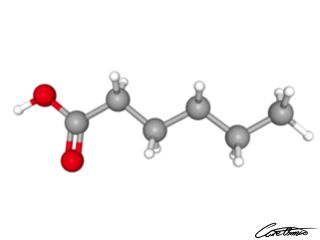
Caproic acid exists in nature. Caproic acid is used for making artificial flavors.
You can find more information about caproic acid in What Is Caproic Acid (6:0) & What Foods Can I Find It In?
Heptanoic acid (7:0) can be toxic
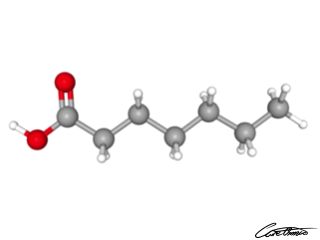
You can find Heptanoic acid in small amounts in many different foods. See more in What Is Heptanoic Acid (7:0)?
Heptanoic acid is mainly produced for the industry, where the compound becomes toxic by ingestion, inhalation, and through skin absorption. Look at its side-effect in Heptanoic Acid (7:0): One Research-Backed Side-Effect
Caprylic acid (8:0) for your hunger
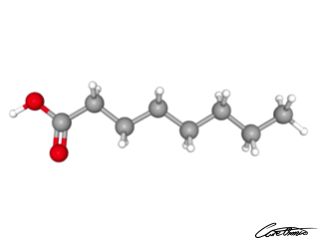
Caprylic acid is found naturally in milk. You can find more information in What Is Caprylic Acid (8:0) & What Foods Can I Find It In?
Caprylic acid works with the body's regulation of energy input and output through a hormone that stimulates hunger.
Caprylic acid has many health benefits. Check them out in Caprylic Acid (8:0): 5 Research-Backed Benefits
Pelargonic acid (9:0) - the herbicide
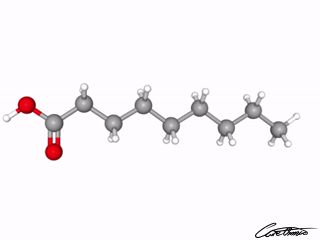
You can find pelargonic acid in many plants. You can find more information about it in What Is Pelargonic Acid (9:0)?
But pelargonic acid's most common use is as an herbicide to prevent the growth of weeds on large crops. Possible without posing any risk for humans.
You can find some benefits of pelargonic acid in Pelargonic Acid (9:0): 2 Research-Backed Benefits
